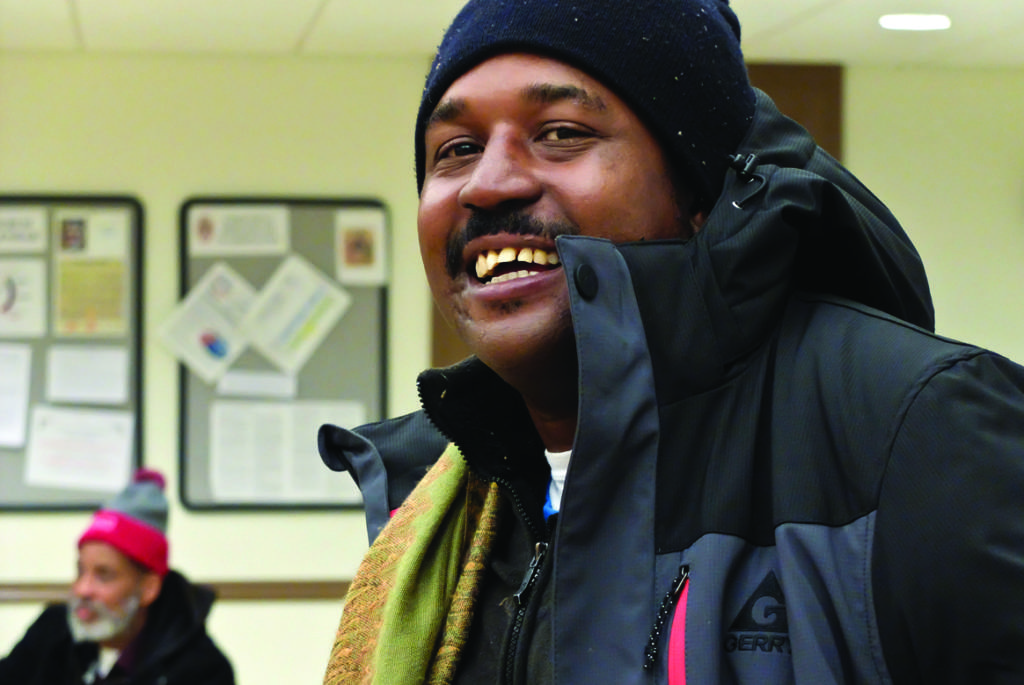A proposed pilot project to help D.C.’s ex-offenders with major disabilities – those with serious mental illness, substance abuse, and HIV/AIDS – gain access to affordable housing, medical assistance, and other supportive services was the focus of a recent policy forum at the Urban Institute.
Convened to discuss housing options that could help to reduce recidivism and social service costs while successfully re-integrating the most vulnerable ex-offenders into their communities, approximately 25 local leaders in the fields of corrections, homelessness prevention, public housing, and community-based services for ex-offenders and their families participated, as did roughly 80 additional observers, including foundation representatives, advocacy groups, and faith-based social service organizations.
The forum was sponsored by the William S. Abell Foundation, a group based in Chevy Chase, Md., that awards grants to assist the homeless, mentally challenged, and abused women and children, and co-sponsored by the Corporation for Supportive Housing (CSH), the D.C. Interagency Council on Homelessness (ICH), and the Urban Institute.
The first half of the all-day event was devoted to information sharing. Participants heard a detailed presentation by Sam Hall of the Urban Institute on the connections between the District’s jail population, homeless population, and users of the city’s emergency medical services.
Then Richard Cho from CSH presented an overview of the “Returning Home Initiative” that his organization had developed around a model that integrated permanent supportive housing (including case management and medical services) with prerelease “in reach” assistance in the months before prisoners complete their sentences.
To create a program that successfully breaks the cycle of incarceration and homelessness, Cho advised, it is important to be able to share data across correctional and social service systems, establish ongoing interagency collaboration and service integration, and develop broad support between service providers and local community organizations.
“We need to have a shared solution,” he explained.
During the second half of the day, participants broke into subgroups – housing providers, homeless services, correctional agencies, and legal advocacy organizations – and discussed how the city is currently addressing community re-entry for ex-offenders with mental illness, what obstacles to progress exist, and what concrete actions would help remove those obstacles and improve the system.
Rada Moss, a program manager in CSH’s D.C. office, announced her organization would like to implement a re-entry model like the one Cho described, but adapted to the District’s individual circumstances. The next step, she explained, would be to establish a group of key stakeholders to design a strategy for a District pilot project. Moss encouraged any organizations interested in working on the pilot project to contact her.
Chapman Todd, director of housing programs for Catholic Charities in D.C. and chairman of the ICH operations committee, commented that in addition to the specific D.C. re-entry project there was another “huge upside to this meeting: the larger issue of relationships, of getting folks interested in discharge planning, and brainstorming on possible collaborative actions.”
Revolving Door Clients
Hall’s presentation was based on the study “Overlapping Jail and Shelter Use in the District: Implications for Reducing the Revolving Door,” in which Hall and Urban Institute scholar Dr. Martha Burt collected and analyzed data on users of city homeless shelters, the D.C. jail, and the District’s Fire and Emergency Medical Service to determine usage system levels and associated costs. “This was the first time there has been this ability to look across systems,” Burt said.
The cross-agency matching identified a group of approximately 206 people who had two or more jail stays, two or more periods in homeless shelters, and had one or more seriously disabling conditions.
The implications of the research, according to the study authors, included:
- A small proportion of the D.C. jail population is often homeless when not in jail. This uses an inordinate amount of the District’s resources;
- Many of these people have significant levels of disability;
- Programs targeting these frequent users, by providing re-entry permanent supportive housing for example, could save the District money by reducing the use of District court, jail, and emergency services; and
- Public safety could be enhanced by keeping potentially unstable people off the street and freeing police and emergency medical services resources for other uses.
Based on their findings, the authors recommend the development of a pilot project, supported by a collaborative effort among DC government agencies, non-profit housing and service providers, advocacy groups, and members of the target population, to provide permanent supportive housing to a reasonable number of frequent users of jail and shelter who also have severe and persistent mental illness or other serious disability.
Asked about the proposed CSH pilot project, Moss said that while no definite number has been decided, she thought that “50 clients would be the ideal size for the first year. We’ll need to be able to closely monitor what works and what doesn’t, and then establish benchmarks.”
Identifying Obstacles
The four subgroups that discussed the existing process for re-integrating D.C. ex-offenders into the community developed an extensive list of potential improvements to the existing system and suggested actions that could advance those improvements.
Based on the brief presentations made at the forum, the following suggestions were generated by the participants:
- Expanded and more professional case management services – including additional training for dealing with clients with mental illness, mentoring, and better pay and reimbursement.
- Adequate and appropriate services and staffing ratios for the re-entry program. • More current and accurate information on available services – including an up-to-date, online resource guide to help volunteers make referrals.
- Better access to correction facilities so that service providers can meet with clients well in advance of release to begin preparation for community reintegration.
- Education programs that will help the community understand the ex-offender population using the proposed permanent supportive housing program.
- Measurable benchmarks for the project so that successes can be identified and evaluated.
- Tracking and documentation of any savings that are generated by the program so that some funds can be reallocated to support additional permanent supportive housing.
The Corporation for Supportive Housing D.C. office is hoping to begin work with key stakeholders soon to identify housing, design a prerelease strategy, and line up partner organizations to share in the post release service provision. According to Moss, “we really are anxious to get this going.”







